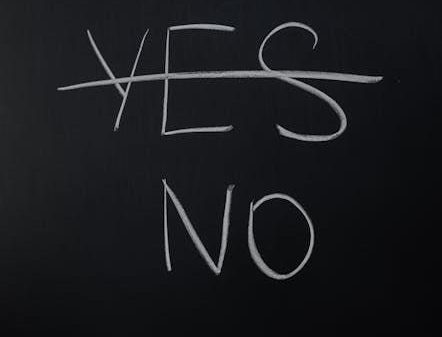In the delicate dance of human relationships, rejection often takes center stage, a moment that is both pivotal and poignant. It’s a universal experience, whether in the realm of romance, friendship, or professional pursuits, where the paths of two individuals diverge, leaving one to explain and the other to understand. But what role does honesty play in these moments of parting ways? Should you lay bare the unvarnished truth, or is a gentle evasion sometimes the kinder route? This article delves into the complex interplay of honesty and empathy, exploring whether full disclosure is always the best policy when it comes to explaining why you rejected someone. As we navigate this intricate terrain, we aim to uncover the potential consequences, both for the rejecter and the rejected, and to offer insights into finding a balance between candor and compassion.
Navigating the Truth in Rejections: Understanding the Impact
When faced with the task of explaining why you have rejected someone, the journey through truth can be a delicate one. Honesty is often seen as the best policy, yet the impact of delivering the unvarnished truth can vary greatly depending on the situation and the individuals involved. Navigating these waters requires both empathy and self-awareness. It’s essential to consider the recipient’s emotional state and how they might perceive the rejection. Here are some factors to weigh when deciding how much truth to reveal:
- Emotional Readiness: Assess whether the person is in a position to handle direct feedback. Sometimes, a gentler approach can be more constructive.
- Intent: Reflect on your motives for sharing the truth. Is it to help them grow, or simply to unburden yourself?
- Relationship Dynamics: Consider the nature of your relationship. With close friends or partners, honesty can strengthen bonds, but with acquaintances, it might lead to unnecessary tension.
- Future Interactions: Think about whether you’ll need to interact with this person again. A tactful approach can preserve future rapport.
In essence, the truth can be a double-edged sword. While it has the power to enlighten and liberate, it can also wound deeply. Striking a balance between honesty and sensitivity is key to minimizing the negative impact of rejection while still fostering understanding and growth.

Balancing Honesty and Kindness: When to Share and When to Spare
In the delicate dance of relationships, knowing when to be truthful and when to withhold can be a complex challenge. On one hand, honesty is often heralded as the best policy, fostering trust and transparency. Yet, there are moments when the raw truth might inflict unnecessary pain, making kindness a preferable path. So, how do you decide whether to reveal your reasons for rejecting someone?
- Consider the Context: The nature of your relationship can greatly influence your decision. If it was a brief encounter or a casual interaction, a simple, gentle response might suffice. For deeper connections, however, a more detailed explanation might be warranted.
- Gauge Emotional Readiness: Before sharing, assess whether the person is in a state to handle the truth. Sometimes, sparing them from the full brunt of your reasoning is an act of compassion.
- Weigh the Consequences: Reflect on the potential impact of your words. Will your honesty provide closure or spark further distress? Balancing these outcomes can guide you toward a more thoughtful approach.
Ultimately, the art of balancing honesty with kindness lies in recognizing the nuances of each unique situation. By considering the emotional landscape of the person involved, you can navigate these sensitive conversations with empathy and respect.
The Art of Gentle Rejection: Strategies for Effective Communication
When it comes to rejecting someone, the truth can be a delicate tool. While honesty is generally the best policy, there are moments when full disclosure might not be the most compassionate choice. Understanding the nuances of the situation can guide you in deciding how much truth to reveal. Consider these factors:
- Context Matters: Assess the nature of your relationship. A close friend may appreciate a candid explanation, while a casual acquaintance might benefit from a more general reason.
- Emotional Impact: Weigh the potential emotional fallout. A gentle, less detailed reason might soften the blow, preventing unnecessary hurt.
- Future Interactions: Think about whether you’ll need to interact with this person again. A truthful explanation can pave the way for more transparent future engagements.
In crafting your response, strive for a balance between sincerity and sensitivity. The art of gentle rejection lies in conveying your message clearly without causing undue pain.

Avoiding Unnecessary Hurt: Tailoring Your Honesty Approach
When navigating the delicate terrain of turning someone down, it is crucial to find a balance between honesty and sensitivity. Honesty is often touted as the best policy, yet when it comes to personal relationships, the raw truth can sometimes cause more harm than good. Consider the context and the emotional state of the person involved. Here are some factors to keep in mind:
- Assess the Situation: Is this a casual acquaintance or someone with whom you share a deeper connection? Your level of closeness can determine how much honesty is appropriate.
- Emotional Impact: Reflect on how your words might be received. Will the truth empower them or potentially leave lasting emotional scars?
- Intent vs. Impact: What is your intention behind being honest? If it’s to genuinely help them grow, frame your feedback constructively.
- Choose Your Words Wisely: Opt for gentle honesty that respects their feelings while still conveying your message.
Ultimately, the art of honesty in rejection lies in delivering your message with empathy and respect, ensuring that while the truth is conveyed, unnecessary hurt is avoided.








